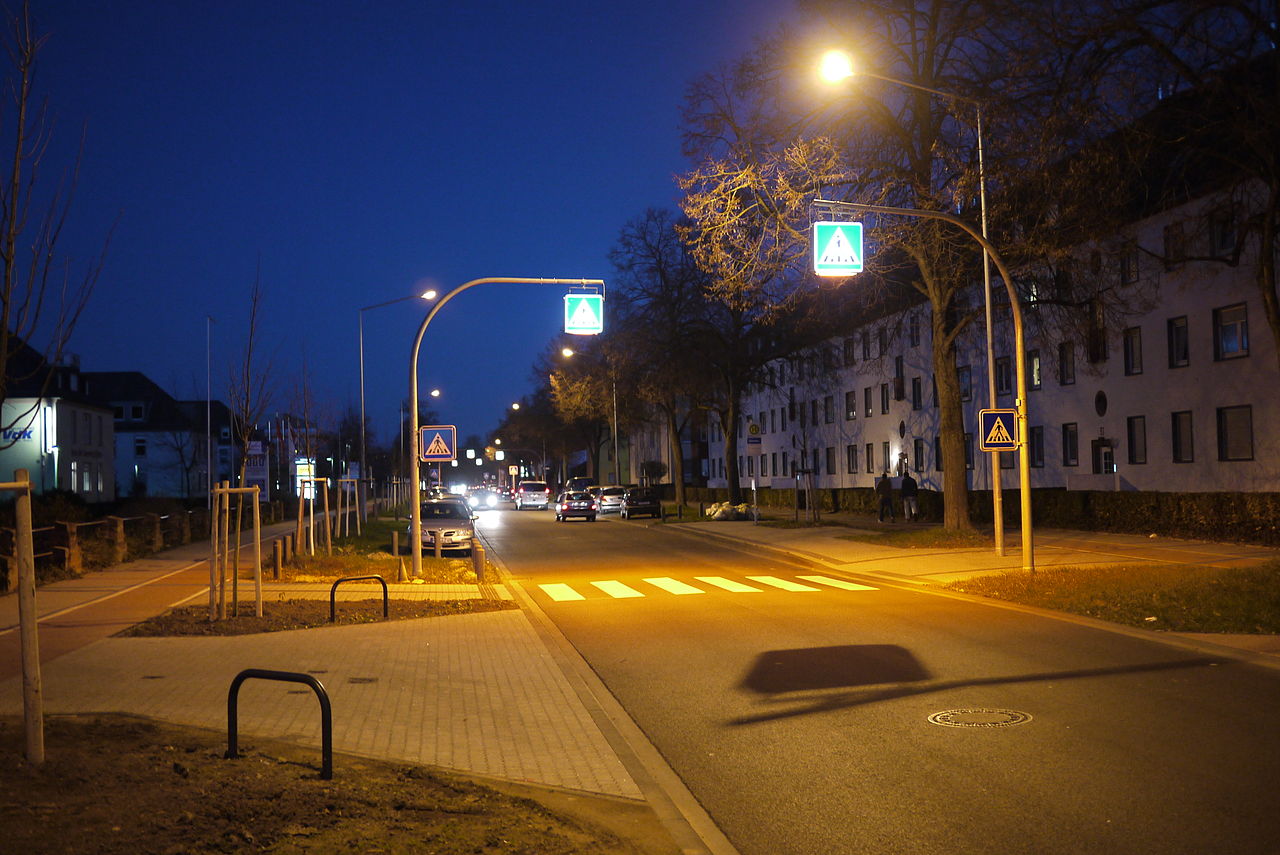Strategy 8 Set policies and practices to leverage, manage, monitor and design for new and emerging technologies that increase visibility and comfort of pedestrians.
The actions within this strategy are divided into two categories:
Action we will DOActions we will SUPPORTAction we will do are followed by “DO” and are colored in dark gray, and actions we will support are followed by “SUPPORT” and are colored in light gray.
Learn more about how we get thereThis strategy outlines ways we can use technology to improve how people walking are detected on our streets, how they may access information about preferred walking routes based on real time information like congestion (noise impacts, air quality impacts), and how infrastructure might physically change given their presence, such as through brighter lighting or LED crosswalks that recognize when a pedestrian is crossing a street.
Improvements for people who are blind or vision-impaired are also likely to be more readily available with new technologies, such as those accessed from smartphones or other devices. These technologies can detail real time conditions (such as detours or unexpected obstacles in the path of travel) into a user’s ear.
Actions to set policies and practices to leverage, manage, monitor and design for new and emerging technologies that increase visibility and comfort of pedestrians.
Walking 8.1
Assess digital wayfinding tools that provide real time information on getting around the city by foot and integrate successful tools into the mobility hub network.
Supported goals:
Mobility
Related actions:
Technology 3.1, Design 5.3
Difficulty:
Low
Timeframe:
2024-2027 (Years 4-7)
Walking 8.2
Explore emerging technology such as adaptive lighting which can brighten when pedestrians, bicyclists, or other street users are detected or expected, enhancing visibility and comfort of all right of way users while aligning with the City’s lighting and energy goals.
Supported goals:
Climate Safety Mobility
Related actions:
Difficulty:
Medium
Timeframe:
2024-2027 (Years 4-7)
Walking 8.3
Test new technologies related to pedestrian detection and data collection, including passive detection at traffic signals to expedite and lengthen the walk phase in response to pedestrian presence and demand.
Supported goals:
Climate Safety Equity Mobility
Related actions:
Technology 1.1, Technology 1.2, Technology 1.3, Technology 1.4, Technology 1.5, Technology 1.6, Technology 1.7, Technology 1.8, Technology 1.9, Technology 1.10, Technology 1.11
Difficulty:
Medium
Timeframe:
2020-2023 (Years 0-3)
Walking 8.4
Assess demonstrations of new applications that provide navigation assistance for people who are blind or low-vision and the potential impact on City practices.
Supported goals:
Safety Equity Mobility
Related actions:
Difficulty:
Low
Timeframe:
2024-2027 (Years 4-7)
